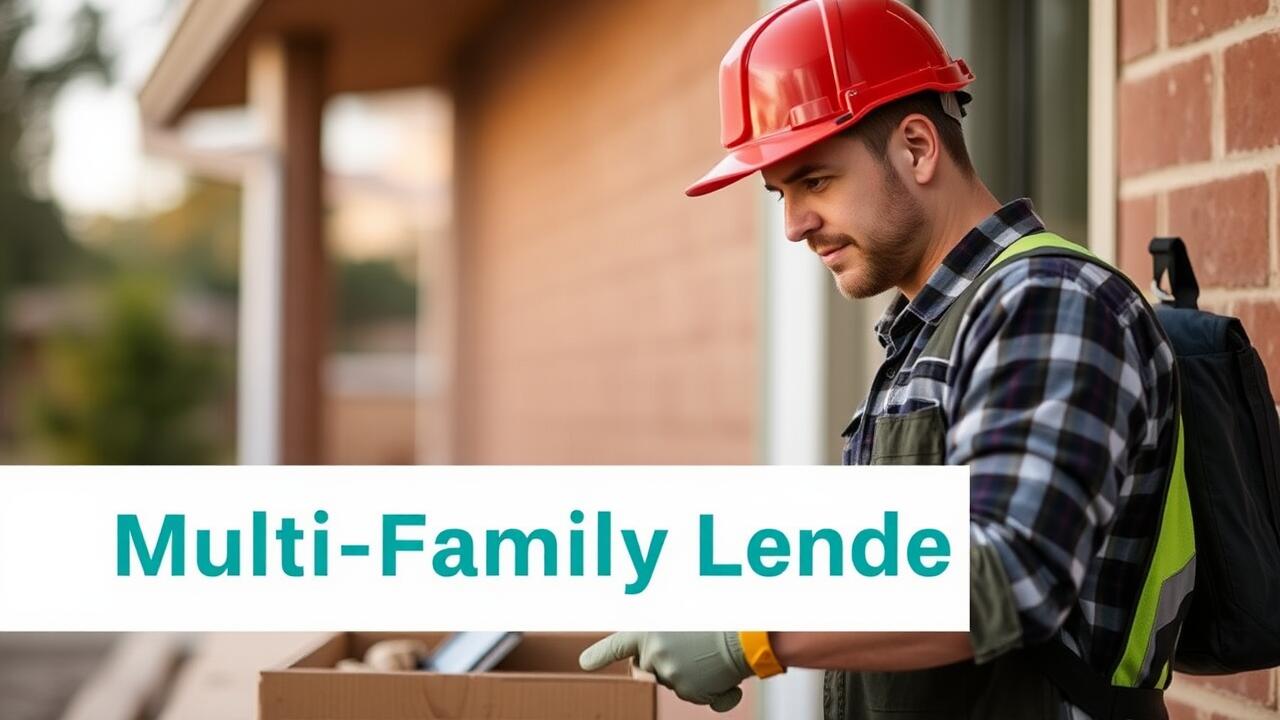
Table Of Contents
FHA Loan Limits for Multifamily Properties
FHA loan limits for multifamily properties vary based on geographical location and the number of units in the property. These limits are set to help ensure that affordable housing options remain accessible across different markets. Multi-family lenders recognize these limits to determine eligibility for financing. In general, the limits are higher for properties with more units due to the increased complexity and cost associated with managing larger residential properties.
The specific loan limit for a multifamily property can be influenced by factors such as local area median income and housing market conditions. Each region is assigned a maximum limit which helps protect borrowers from overextending financially while still allowing them to invest in multi-family real estate. Multi-family lenders must adhere to these regulations when structuring loans, adding a layer of assurance for both investors and the housing market.
Understanding Loan Limits by Region
FHA loan limits vary by region, reflecting the cost of living and property values in different areas across the United States. These limits are set annually and can differ significantly depending on whether a property is located in a rural area or a metropolitan city. Multi-Family Lenders must be aware of these variations to better understand the financing options available for potential multifamily investments.
Regions with higher housing costs typically have higher FHA loan limits, allowing borrowers to secure larger amounts for their multifamily properties. In contrast, areas with lower costs of living feature lower limits. Multi-Family Lenders need to consider these factors when assessing borrower eligibility and structuring loan packages to meet the specific needs of their clients.
Key Requirements for FHA Multifamily Loans
FHA multifamily loans come with specific requirements that borrowers must meet in order to secure financing. Eligible properties usually consist of two to four units, as this aligns with the guidelines established by the FHA. Borrowers must demonstrate their creditworthiness through a minimum credit score, while also providing adequate income documentation. Multi-Family Lenders will typically assess the borrower’s ability to manage property expenses and generate rental income. This evaluation is crucial in determining eligibility and ensuring that the borrower can sustain the investment long term.
In addition to personal eligibility criteria, the property itself must meet certain standards. These standards include safety and livability requirements, as outlined by local building codes and FHA regulations. An appraisal will be necessary to assess the property’s value and condition. Multi-Family Lenders will look for properties in desirable locations to enhance the likelihood of steady rental income. Meeting these guidelines not only streamlines the approval process but also helps protect the borrower’s investment in the multifamily property.
Necessary Documentation and Qualifications
When seeking FHA multifamily loans, applicants must prepare specific documentation to demonstrate their qualifications. Typically, lenders will require property-related documents, including sales contracts and rent rolls. Detailed financial statements are also essential, showcasing the borrower's income, assets, and liabilities. Additionally, a solid credit history can significantly enhance the likelihood of loan approval. Multi-Family Lenders will closely evaluate these materials to assess the applicant's ability to manage the property effectively.
Qualifications for FHA multifamily loans include meeting certain credit score thresholds, which may vary by lender and specific loan terms. Borrowers must also provide proof of steady income and a stable employment history. In some cases, previous experience in property management can be beneficial, as it shows familiarity with the challenges of managing multifamily units. By understanding these requirements, potential borrowers can better position themselves for success in securing funding from Multi-Family Lenders.
Comparing FHA Multifamily Loans to Conventional Loans
FHA multifamily loans offer unique features that can make them appealing compared to conventional loans. FHA loans typically require lower down payments, often around 3.5%, which can ease the financial burden for investors looking to acquire multi-family units. Additionally, FHA financing allows for more flexible credit score requirements, making it accessible for a broader range of borrowers. Multi-Family Lenders often highlight these advantages when presenting options to clients who may have difficulty qualifying for conventional financing.
On the other hand, conventional loans might provide more favorable terms for those with stronger credit profiles and substantial financial reserves. They can offer lower interest rates for well-qualified borrowers, along with fewer restrictions on property types and uses. However, the downside often involves larger down payment requirements and stricter credit criteria. Multi-Family Lenders typically assess the entire financial profile of the borrower, which influences what type of financing will be the best fit for specific investment goals.
Differences in Terms and Conditions
FHA multifamily loans and conventional loans differ significantly in their terms and conditions. FHA loans typically have more lenient credit score requirements, making them an attractive option for borrowers who may have less-than-perfect credit. The down payment for FHA multifamily loans can be as low as 3.5%, which is considerably lower than the standard required for many conventional loans. This accessibility makes it easier for investors to enter the multifamily housing market.
On the other hand, conventional loans often offer faster processing times and fewer bureaucratic hurdles compared to their FHA counterparts. These loans might be preferred by experienced investors who possess stronger credit profiles and seek to capitalize on quicker acquisition opportunities. Multi-Family Lenders may provide various financing options, creating a range of flexibility in choosing the right loan product based on specific investment strategies and goals.
FAQS
What is an FHA multifamily loan?
An FHA multifamily loan is a mortgage backed by the Federal Housing Administration that is specifically designed for the purchase or refinancing of properties with multiple housing units, such as apartment buildings.
What are the FHA loan limits for multifamily properties?
FHA loan limits for multifamily properties vary by region and the number of units in the property. These limits are set annually and can be checked on the FHA's official website or through local housing authorities.
What key requirements must be met to qualify for an FHA multifamily loan?
To qualify for an FHA multifamily loan, borrowers typically need a valid Social Security number, a minimum credit score of 580 (or 500 with a larger down payment), a stable income, and to meet specific property standards.
How does the documentation for FHA multifamily loans differ from conventional loans?
FHA multifamily loans require specific documentation, including financial statements, tax returns, and detailed property information. While conventional loans also require documentation, the FHA process is often more extensive due to its regulatory requirements.
Are there any advantages to choosing an FHA multifamily loan over a conventional loan?
Yes, FHA multifamily loans often offer lower down payment requirements, more lenient credit score criteria, and can provide financing for properties with up to 4 units, making them an attractive option for first-time investors.



